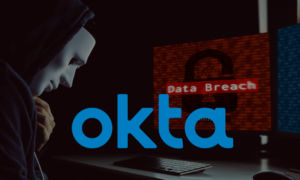
Okta, one of the world’s leading providers of digital identity verification, announced a serious data breach in January. The attack may have affected hundreds of customers that rely on its software to manage secure access to their internal computer networks.
If such big organizations are facing third-party data breaches, then what about small and midsize businesses?
Let’s find out about third-party data breaches and how to protect your organization.
Table of Contents
Chief Security Officer of Okta, David Bradbury shared information about the data breach in a blog post. A customer support engineer working for a third-party contractor had his computer accessed by the hackers for a five-day period in mid-January.
The potential impact on Okta customers is huge, even though the attackers were limited by the low-security access of support engineers.
“There are no corrective actions that need to be taken by our customers,”. According to their thorough analysis of the claim, approximately 2.5% of their customers have been affected and their data has been viewed or acted upon. They have identified those customers and already reached out directly by email.
The biggest problem with third-party apps is their lack of protection. Organizations often give third parties too much access, lack visibility into the access of those organizations, and often struggle to control and manage third-party access. As the third-party organization associations increase, the risk level also increases.
In addition, third parties serve as a hallway, allowing hackers to move from one organization to another. Through this method, they don’t just gain access to a particular organization, but also to different affiliated organizations.
All companies, regardless of the size of the industry, should try to develop their robust access policies, monitor access as close as possible, and make sure they have visibility, insight, and the ability to manage and control third-party access.
The first thing you need to do is evaluate your vendors beforehand. It is strongly recommended to restrict access to your network and data. Be sure to monitor your vendors constantly. Get rid of vendors who put you at risk by saying goodbye.
The privacy of third parties on your data depends on how you treat them. These are the steps to take care of:
It’s better to be safe than sorry. In order to avoid a future data breach, follow all the suggested preventative measures.
Want to test how secure your business is against cyber attacks?
Let’s talk. We will analyze your current cyber security measures and help you optimize your security.
Haven’t heard of SASE before? You’re not alone. Standing for Secure Access Service Edge, SASE…
The presence of cyber risks could lead to a disruption in the operations of any…
IT teams require more effective approaches to monitor and control devices remotely as remote work…
Artificial Intelligence (AI) capabilities like machine learning, natural language processing and robotic process automation are…
From servers to smartphones, schools and businesses depend on scores of devices. Managing this technology…
Do you ever wonder how your school’s computers get software updates or performance fixes without…